Gaotai Mountain (高台山) and the three Daotian Peaks (小中大島田山回來) afford visitors a truly rewarding hike in Hsinchu County (新竹).
Located in the foothills just beyond the charming Neiwan Old Street (內灣老街), the hike is well suited for hikers in a fair to good physical condition. It’s also a good introduction to the foothills of northwest Taiwan, along with some more adventurous — but still not terribly dangerous — rope and scrambling sections. As a bonus, there are Japanese ruins, hot springs and river tracing destinations such as Meihua Waterfall (梅花瀑布) and Bilin Waterfall (比麟瀑布) all located nearby.
WHISPERING PINES
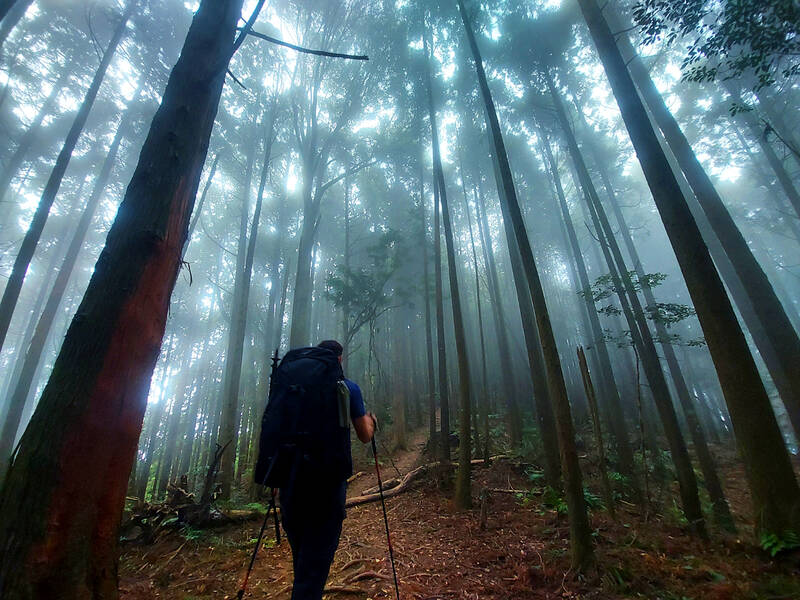
Photo: David Cotter II
The first section of the Gaotai Mountain hike is a beautiful, mostly uphill walk through pine forests that lead up to the peak. For those in good physical condition, this should not be difficult, but it will definitely get your blood flowing.
There is a triangulation point marker (三角點) on the peak of Gaotai Mountain, but don’t stop there for too long. Your real destination should be the campsite located just beyond. You can stay overnight if you want (just remember to bring water with you). Note that there may be crowds on weekends or holidays.
THREE PEAKS
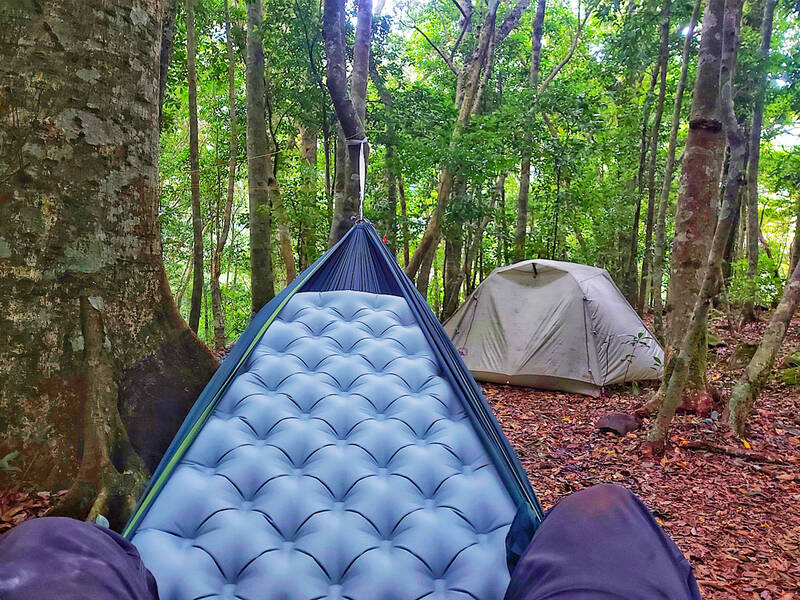
Photo: David Cotter II
Near the campsite, there are the ruins of an old Japanese building — a military police occupation center constructed specifically to keep indigenous communities under control. Not only that, but the trail itself was originally a Japanese road, and you can still see remnants of it at various points along the hike.
Beyond the ruins you’ll find this section of the hike is more demanding. Just follow the trail and you will soon reach the so-called “Small,” “Middle” and “Big” Daotian Peaks.
Notwithstanding the name, at only 1824 meters, Big Daotian is a relatively low peak although it is home to a gigantic tree that you can climb and get some great pictures from.
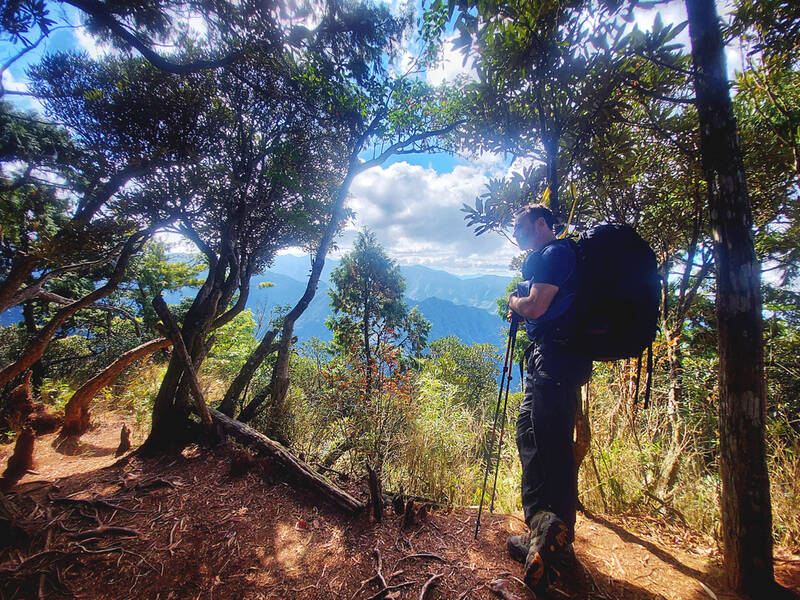
Photo: David Cotter II
Like many hills of its kind, Big Daotian Peak only has a small clearing and little to no view at the top. But the trees coating the slopes are amazing, with gnarly, moss covered roots rising up to a lush canopy.
Follow the path to the right indicated by the flags and you will arrive at a three way intersection in a clearing.
To return to the trailhead, turn right and head downhill. This will take you back to the campsite, Gaotai Mountain and the exit.
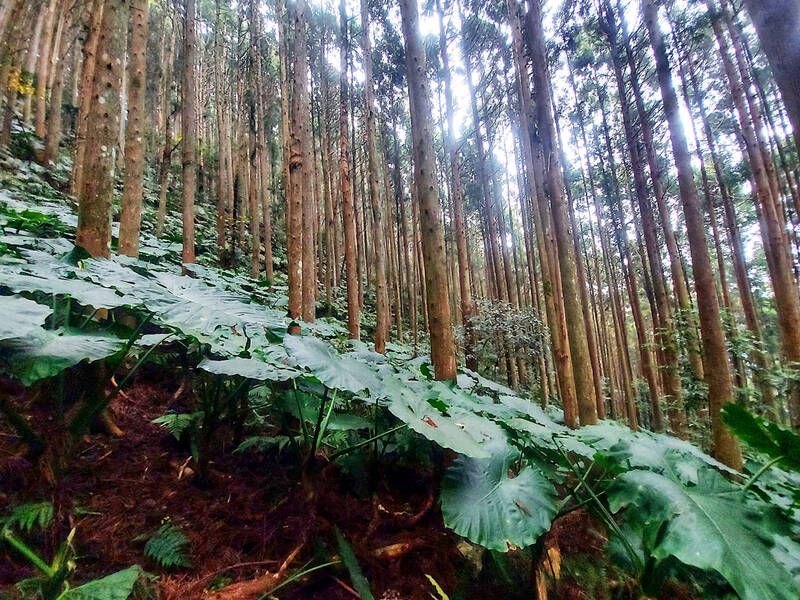
Photo: David Cotter II
The trail off to the left heads towards Shihmada Mountain (石麻達山) and marks the beginning of a network of trails that snake their way throughout a series of much more remote and challenging mountains.
RELICS AND RUINS
The Shimada Mountain trail passes by many more overgrown Japanese Colonial-era ruins. These include obvious foundations of walls and doors, a prominent, round stone structure that was once the base of a cannonade, ominously overlooking the local indigenous villages in the valleys below. You’ll also find the clearest remnants of the old Imperial road.
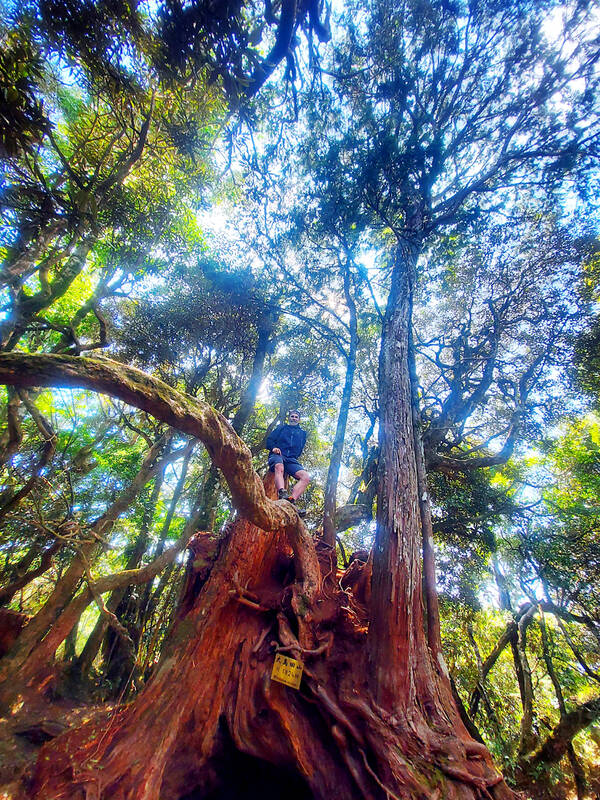
Photo: David Cotter II
This trail is much more demanding, overgrown and difficult to follow. It is only sparsely marked and has no water sources. For experienced hikers looking for an interesting challenge, this may be worth your while; otherwise, just take a quick look and then head back to the trailhead.
The route back to Gaotai Mountain circumvents the Daotian peaks, following the abandoned Japanese Imperial era road instead. Some sections are in excellent condition, and you can get a sense of what the entire road would have looked like in its heyday, while other sections have collapsed over time, crumbling into the misty jungle like the remnants of some lost civilization. While these are easily passable, they add a lot of ambiance and definitely make the hike a lot more fun.
Eventually, you’ll get back to the campsite, from where it is easy to find your way back downhill. However, while you leave the mountain behind, you might find you left a piece of your heart amid Hsinchu’s green and pleasant hills.

April 14 to April 20 In March 1947, Sising Katadrepan urged the government to drop the “high mountain people” (高山族) designation for Indigenous Taiwanese and refer to them as “Taiwan people” (台灣族). He considered the term derogatory, arguing that it made them sound like animals. The Taiwan Provincial Government agreed to stop using the term, stating that Indigenous Taiwanese suffered all sorts of discrimination and oppression under the Japanese and were forced to live in the mountains as outsiders to society. Now, under the new regime, they would be seen as equals, thus they should be henceforth

Last week, the the National Immigration Agency (NIA) told the legislature that more than 10,000 naturalized Taiwanese citizens from the People’s Republic of China (PRC) risked having their citizenship revoked if they failed to provide proof that they had renounced their Chinese household registration within the next three months. Renunciation is required under the Act Governing Relations Between the People of the Taiwan Area and the Mainland Area (臺灣地區與大陸地區人民關係條例), as amended in 2004, though it was only a legal requirement after 2000. Prior to that, it had been only an administrative requirement since the Nationality Act (國籍法) was established in

With over 80 works on display, this is Louise Bourgeois’ first solo show in Taiwan. Visitors are invited to traverse her world of love and hate, vengeance and acceptance, trauma and reconciliation. Dominating the entrance, the nine-foot-tall Crouching Spider (2003) greets visitors. The creature looms behind the glass facade, symbolic protector and gatekeeper to the intimate journey ahead. Bourgeois, best known for her giant spider sculptures, is one of the most influential artist of the twentieth century. Blending vulnerability and defiance through themes of sexuality, trauma and identity, her work reshaped the landscape of contemporary art with fearless honesty. “People are influenced by

The remains of this Japanese-era trail designed to protect the camphor industry make for a scenic day-hike, a fascinating overnight hike or a challenging multi-day adventure Maolin District (茂林) in Kaohsiung is well known for beautiful roadside scenery, waterfalls, the annual butterfly migration and indigenous culture. A lesser known but worthwhile destination here lies along the very top of the valley: the Liugui Security Path (六龜警備道). This relic of the Japanese era once isolated the Maolin valley from the outside world but now serves to draw tourists in. The path originally ran for about 50km, but not all of this trail is still easily walkable. The nicest section for a simple day hike is the heavily trafficked southern section above Maolin and Wanshan (萬山) villages. Remains of